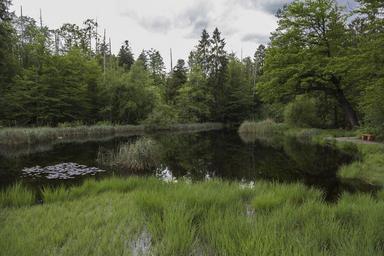Introduction
In the world of indoor gardening, maintaining the right levels of humidity is crucial for the health and vitality of your plants. Whether you're a novice grower or a seasoned horticulturist, understanding how to control humidity in grow tent environments can significantly impact your crop yield and quality. This comprehensive guide explores best practices for managing humidity, including tips on equipment, techniques, and common challenges.
Understanding Humidity: What You Need to Know
What is Humidity?
Humidity refers to the amount of water vapor present in the air. It plays a vital role in plant growth as it affects transpiration rates, nutrient uptake, and overall plant health.
Why is Humidity Important for Plant Growth?
Plants absorb water through their roots but lose moisture through leaves via transpiration. The right humidity level aids this process, ensuring that plants remain hydrated while also preventing mold and mildew growth.
Optimal Humidity Levels for Different Plants
- Seedlings: 65% - 70% Vegetative Stage: 40% - 60% Flowering Stage: 40% - 50%
Understanding these ranges helps growers tailor their humidification strategies accordingly.
Controlling Humidity in Your Grow Tent: Best Practices
Maintaining ideal humidity levels requires a multi-faceted approach. Here are some best practices to ensure your plants thrive:
Investing in Quality Equipment
Hygrometer Digital vs Analog
When monitoring humidity levels, choosing between a digital or analog hygrometer can be daunting. Digital hygrometers offer superior accuracy and often include additional features such as temperature readings and alarms. On the other hand, analog devices are generally more affordable but may require frequent calibration.
| Feature | Digital Hygrometer | Analog Hygrometer | |------------------------|---------------------|---------------------| | Accuracy | High | Moderate | | Price | Higher | Lower | | Additional Features | Yes | No |
Choosing the Right Dehumidifier
A dehumidifier is essential for controlling excess moisture. You can opt for battery-operated dehumidifiers or larger units designed specifically for grow tents. Understanding types of dehumidifiers includes:
- Refrigerant-based Desiccant-based (like using silica gel)
Each type has its pros and cons, so select one that fits your space requirements.

Using Natural Methods to Control Humidity
How to Raise Humidity in Grow Tent Naturally
Sometimes natural methods can effectively enhance humidity without relying on gadgets:
Water Trays: Place trays of water near plants; evaporation increases moisture. Misting: Lightly misting plants can provide an instant boost in humidity but should be done carefully to avoid mold. Soil Moisture: Maintain adequate soil moisture; damp soil contributes to overall humidity levels.Silica Gel for Moisture Control
Silica gel packets are excellent desiccants commonly found in shoe boxes; they absorb excess moisture effectively. Learn how to use silica gel in shoes or around your plants to maintain optimal conditions.
Ventilation Techniques for Humidity Control
Proper ventilation prevents stagnant air and allows moisture levels to stabilize.

Passive Ventilation Systems
Utilizing vents or openings helps regulate airflow naturally without mechanical aid.
Active Ventilation Options: Fans and Air Purifiers
Using fans can improve airflow within the tent while also reducing hot spots where humidity might accumulate:
- A tower fan or pedestal fan can efficiently circulate air. An air purifier with a filter reset feature improves indoor air quality by removing particulates that attract mold spores.
Monitoring Air Quality: Essential Tools & Techniques
Air Quality Monitors for Mold Detection
Investing in an air quality monitor specifically designed to detect mold spores ensures you’re aware of potential problems before they escalate.
Seasonal Adjustments for Optimal Growth Conditions
Humidity levels could fluctuate with changing seasons—understanding seasonal changes is crucial:
- Summer: Increased ambient humidity; consider dehumidifiers. Winter: Lower outdoor RH; might require humidifiers or other methods to raise humidity indoors.
FAQs
What does the red light on my air purifier mean?
The red light typically indicates that the filter needs replacing or cleaning. Always check your user manual for specific troubleshooting steps.
How do I fill my humidifier correctly?
Most humidifiers have easily accessible water tanks; simply remove them, fill with distilled water (to reduce mineral buildup), and replace them properly according to manufacturer's instructions.
Can I use an infrared heater without affecting my electric bill too much?
Infrared heaters tend to heat objects rather than air directly but may still impact your electric bill if used extensively. Consider energy-efficient models if cost is a concern.
Are bladeless fans more energy efficient than traditional fans?
Bladeless fans are typically quieter and offer smoother airflow but may not necessarily be more energy-efficient compared to traditional fans depending on usage patterns.
Do I need an attic dehumidifier installation if I live in a humid area?
Yes! Installing an attic dehumidifier helps prevent excess moisture buildup which can lead to mold growth and structural damage over time.
What’s the best way to troubleshoot my air purifier?
Begin by checking power sources, cleaning filters, resetting the device per manufacturer guidelines, and ensuring proper placement away from walls or obstructions that might impede airflow.
Conclusion
Controlling humidity in your grow tent involves understanding environmental factors, investing in suitable equipment, employing natural methods, ensuring adequate ventilation, and constantly monitoring conditions with quality tools. By implementing these best practices outlined above under "Controlling Humidity in Your Grow Tent: Best Practices," you will maximize both plant health and yield potential while minimizing risks associated with excessive moisture levels such as mold growth or plant diseases. With diligence and care toward maintaining balance within this micro-environmental ecosystem—your indoor garden will flourish like never before!
By following these detailed guidelines on controlling humidity effectively within http://themusespace109.lucialpiazzale.com/how-to-effectively-use-silica-gel-in-shoes-for-odor-control your grow tent setup—not only do you set yourself up for success as a gardener but you also cultivate an environment ripe for producing lush greens year-round!